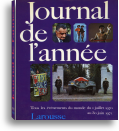Océanie
Australie

12 552 000. 2. 1,9 %.
Économie. PNB (68) 2 479. Production (65) : A 10 % + I 43 % + S 47 %. Énerg. (*68) : 5 124. C.E. (68) : 11 %.
Transports. (*68) : 20 053 M t/km. (*68) : 3 444 800 + 921 700. : 894 000 tjb. (*68) : 7 296 819 000 pass./km.
Information. (67) : 60 quotidiens ; tirage global : 4 270 000. (68) : 2 578 000. (67) : 2 234 000. (66) : 638 700 fauteuils ; fréquentation : 37,5 M. (68) : 3 393 436.
Santé (66). 13 697. Mté inf. (67) : 18,3.
Éducation (67). Prim. : 1 798 521. Sec. et techn. : 1 001 418. Sup. : *153 000.
Institutions. Fédération de 6 États (Commonwealth of Australia), indépendante le 1er janvier 1901. Constitution de 1901. Gouverneur général représentant la Couronne britannique : Sir Paul Hasluck. Premier ministre : William McMahon. Les élections sénatoriales du 21 novembre marquent le recul de la coalition gouvernementale.
Fidji

533 000. 29. 3,1 %.
Économie. PNB (67) 319. Énerg. (*68) : 346. C.E. (68) : 31 %.
Transports. (*68) : 9 300 + 4 700.
Information. (66) : 1 quotidien ; tirage : 10 000. (68) : 40 000. (60). Fréquentation : 0,5 M. (68) : 14 507.
Santé (67). 204.
Éducation. Prim. (63) : 84 600. Sec. et techn. (63) : 7 279. Sup. (62) : 467.
Institutions. État indépendant le 10 octobre 1970. Gouverneur général représentant la Couronne britannique : Sir Robert Foster. Premier ministre : Kamisese Mara.
Nauru

6 000. 286. 4,6 %.
Économie. Énerg. (*68) : 4 000.
Santé (68). 10.
Éducation (67). Prim. : 1 419. Sec. et techn. : 344.
Institutions. République indépendante le 31 janvier 1968. Constitution de 1968. Président de la République : Hammer de Roburt. Les Affaires étrangères et la Défense sont assurées par l'Australie.
Nouvelle-Zélande

2 816 000. 11. 1,7 %.
Économie. PNB (67) 2 007. Énerg. (*68) : 2 678. C.E. (67) : 18 %.
Transports. (*68) : 544 M pass./km, 2 629 M t/km. (*68) : 829 900 + 166 200. : 181 000 tjb. (*68) : 1 266 629 000 pass./km.
Information. (68) : *40 quotidiens ; tirage global : *1 027 000. (68) : 657 000. (68) : 604 000. (68) : 176 800 fauteuils. (68) : 1 155 465.
Santé (67). 3 200. Mté inf. (68) : 18,7.
Éducation (66). Prim. : 485 342. Sec. et techn. : 163 159. Sup. : 29 553.
Institutions. État indépendant en 1931. Des lois fondamentales tiennent lieu de constitution. Gouverneur général représentant la Couronne britannique : sir Arthur Porritt. Premier ministre : Keith J. Holyoake.
Samoa occidentales

143 000. 50. 2,7 %.
Économie. Énerg. (*68) : 109.
Information. (68) : *35 000. (68) : 1 700 fauteuils ; fréquentation : 0,4 M.
Santé (68). 46.
Éducation (67). Prim. : 24 811. Sec. et techn. : 8 207.
Institutions. État indépendant le 1er janvier 1962. Constitution de 1960. Chef de l'État : Malietoa Tanumafili. Premier ministre : Fiamë Mata'afa Faumuina Mulinu'u II.
Tonga

83 000. 119. 3,4 %.
Information. (67) : *4 900. (66) : 3 200 fauteuils.
Santé (67). 22.
Éducation (67). Prim. : 16 794. Sec. et techn. : 7 835.




